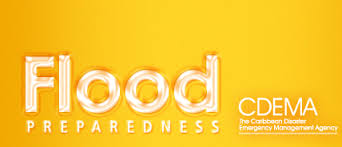What to do after a Flood
- Listen to the radio for instructions.
- When returning home and before you enter the house, be sure that the structure is not in danger of collapsing:
- move about the building slowly
- do not touch electrical appliances or fixtures
- Open windows and doors to let air circulate. This will help remove foul odours and protect you from escaping gas. It will also help to dry out the house
- Take pictures of damage both to the house and its contents for insurance purposes.
- Get in touch with insurance company - if house was insured.
- Begin clean up as soon as possible. Throw out any perishable foods. They may be contaminated.
- You may need to hose down furniture if mud is lodged on them. Shovel out mud while it is still moist and dry rugs and carpets thoroughly.
- Make necessary repairs to stop further losses from the elements or from looting.
- Boil and store drinking water.
- Keep garbage tightly sealed.
- Cover and protect food.
- Prevent mosquito breeding by punching holes in all containers in which water can settle.
- Keep garbage tightly sealed.
- Do not walk barefooted outside, during or after a flood. Wear water boots or shoes.
- Do not go sightseeing in flooded areas.
- Do not touch loose or dangling electrical wires.
- Exercise caution when crossing bridges and passes that are near to rivers and streams. Use only recommended routes.
- Bury all dead animals as soon as possible.
- Do not go swimming in floodwaters.
Follow evacuation orders carefully.
further information
To learn more about floods that have affected St. Vincent and the Grenadines please click here.
